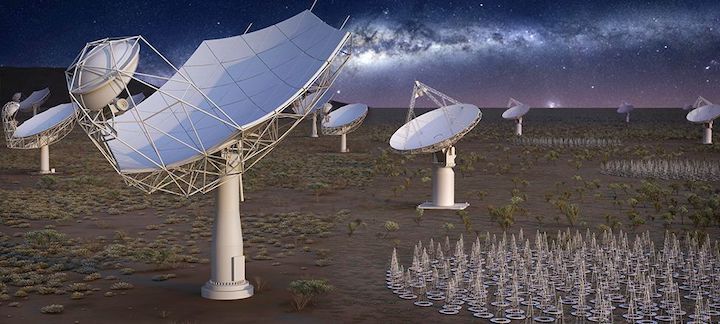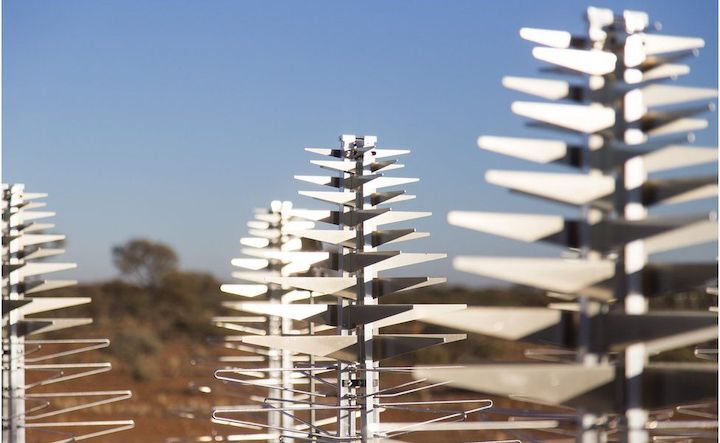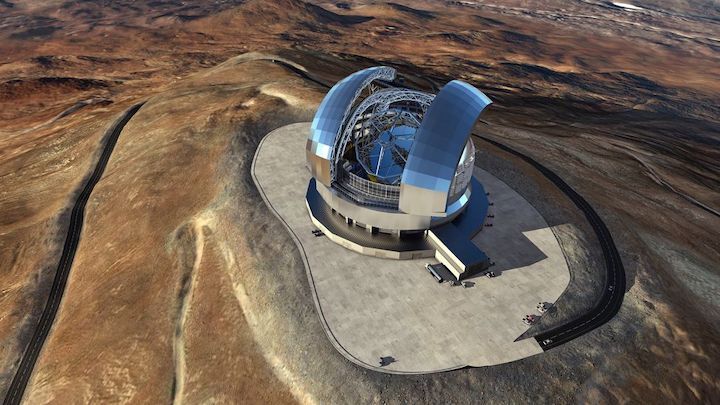13.04.2022

A group of UK institutions is going to build a prototype "brain" to control the world's biggest radio telescope.
The Square Kilometre Array (SKA) will initially comprise 197 dishes and 130,000 antennas spread across South Africa and Australia.
All will be linked and need to work in perfect harmony.
The software now being developed for the purpose will be trialled on a small subset of the infrastructure before being rolled out across the network.
The SKA is an immense computing challenge, says Dr Chris Pearson, astronomy group leader at RAL Space, based on the Harwell Campus in Oxfordshire.
"We're talking something like 600 petabytes (600 million gigabytes) per year of data coming out of the SKA, to be delivered to astronomers worldwide," he told BBC News.
"So it's a scaling problem, it's a processing problem, it's a data transfer problem."

Prototype hardware: Low-frequency antennas will be positioned in Australia
The SKA is one of the grand scientific projects of the 21st Century, and will join a series of next-generation telescopes coming online this decade. This includes the recently launched James Webb Space Telescope and the super-sized European Extremely Large Telescope (E-ELT), which will have an optical primary mirror 39m in diameter.
The SKA's resolution and sensitivity at radio wavelengths, allied to that prodigious computing support, will enable astronomers to address some of the most fundamental questions in astrophysics today.
How did the first stars come to shine in the Universe? What exactly is "dark energy" - the mysterious form of energy that appears to be driving the cosmos apart at an accelerating rate? And even the most basic question of all - are we alone? The SKA's unprecedented sensitivity would pick up any extra-terrestrial transmissions.
The international organisation behind the SKA gave the formal "go" last year to begin construction of the array - a task that will take most of this decade.
The UK government, through the Science & Technology Facilities Council (STFC), is the largest contributor to the SKA organisation and currently has a commitment to support 15% of the total cost of construction and the initial operations from 2021 to 2030.

Artwork: The SKA will complement a new wave of super telescope such as the E-ELT
As part of this commitment, the STFC released £15m on Monday to fund the array's software development.
The money will go to support work at the universities of Oxford, Cambridge and Manchester, as well at STFC labs at Harwell, Daresbury and Edinburgh.
The software will tell the telescope where to look on the sky, diagnose any issues and translate the telescope's signals into useable data from which discoveries can be made.
This would be straightforward if it were one dish or one antenna, but the system must work in unison across the thousands of individual components of the array.
"We will start small," said Dr Pearson.
"The software that we produce will work first on four radio dishes in South Africa. And if you're talking about those small antennas in Australia, it will work on six stations (of 256 antennas) in the first instance.
"And then we have to scale in a smart way. We can't do it linearly as the number of dishes and antennas increases, or it will become impossible."
This first prototype brain is expected to be up and running in 2024.
Quelle: BBC
